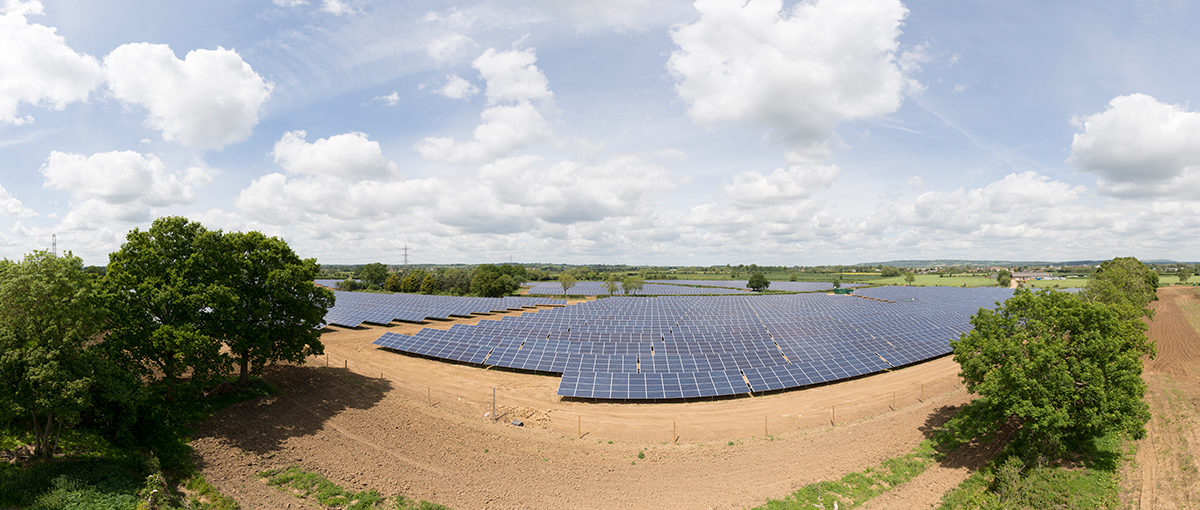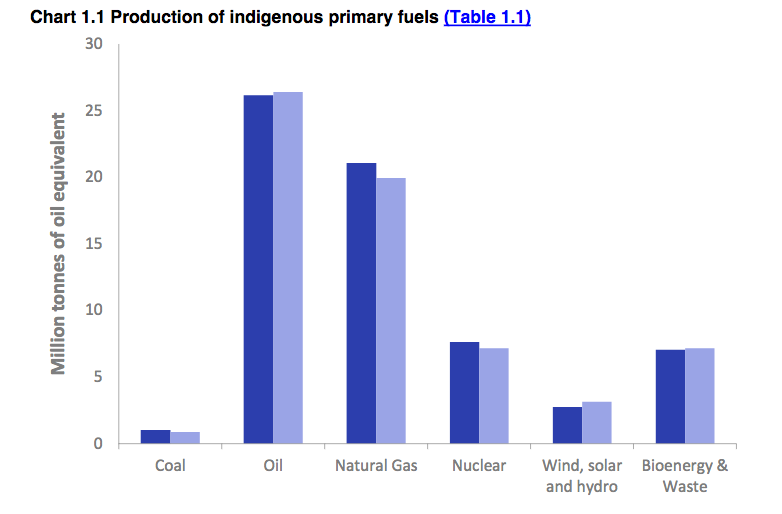The United Kingdom has released new data, in its quarterly Energy Trends publication, regarding electricity generation in Q2 2018. Overall, renewable energy – hydro, wind, bioenergy, solar and “other renewables” – reached a record high of 31.7% of total generation capacity. In comparison, coal-fired power plants experienced a historical downturn during the quarter, comprising just 1.6% of total generation.
Overall, electricity generation was down by 2.1%, compared to the second quarter of 2017. Coal was the biggest loser, according to the government's data. Production fell by 1.9% compared to Q2 2017, while coal imports fell by 7.3%, and demand for coal declined by 18%.
The data also shows that renewable electricity generation rose by 3% year on year, to 24.3 TWh in Q2 2018, and capacity increased 10% to 42.2 GW, with over half of this increase accounting for offshore wind.
Resulting from the high share of solar PV in this quarter's electricity production, as well as the high share of other renewable energy sources and nuclear power, low carbon electricity generation accounted for 53% of the U.K.’s supply.
Popular content
Despite this record-setting trend, PV installations in the United Kingdom have stalled, due to a lack of government funding and support. Between July and August, additional installations reached a mere 21 MW. Solar PV deployment data provided by the U.K. government suggests that as of the end of August 2018, total PV installations reached 12,933.8 MW across 960,231 installations. Since August 2017, this marks an increase of just 1.7% or 221.5 MW. In all of August 2018, 12.51 MW were deployed.

Over the last three years, the largest capacity addition for solar PV took place in March 2016, when 1,227 MW were installed. Of this, 53% or 647 MW accounted for installations smaller than 5 MW. At the time, the Renewables Obligation scheme, and entailing grace periods ran out. In April 2016, additional PV installations reached just 16 MW, marking a decrease of 98.7%.
Making matters even worse for solar PV installations, the government recently proposed an end to the export tariffs scheme for small-scale solar PV, and gave the industry until September to respond. The country's Renewable Energy Association stated in its response that the tariff scheme must be kept on after March 31, 2019. The association also suggested new targeted tax incentives, such as the introduction of 0% VAT for on-site renewables, to retain deployment.
The article has been changed to amend the title, which said PV accounted for 31% of UK electricity. It should read renewables. The graphs have also been added. Apologies for the mistake.
This content is protected by copyright and may not be reused. If you want to cooperate with us and would like to reuse some of our content, please contact: editors@pv-magazine.com.





By submitting this form you agree to pv magazine using your data for the purposes of publishing your comment.
Your personal data will only be disclosed or otherwise transmitted to third parties for the purposes of spam filtering or if this is necessary for technical maintenance of the website. Any other transfer to third parties will not take place unless this is justified on the basis of applicable data protection regulations or if pv magazine is legally obliged to do so.
You may revoke this consent at any time with effect for the future, in which case your personal data will be deleted immediately. Otherwise, your data will be deleted if pv magazine has processed your request or the purpose of data storage is fulfilled.
Further information on data privacy can be found in our Data Protection Policy.